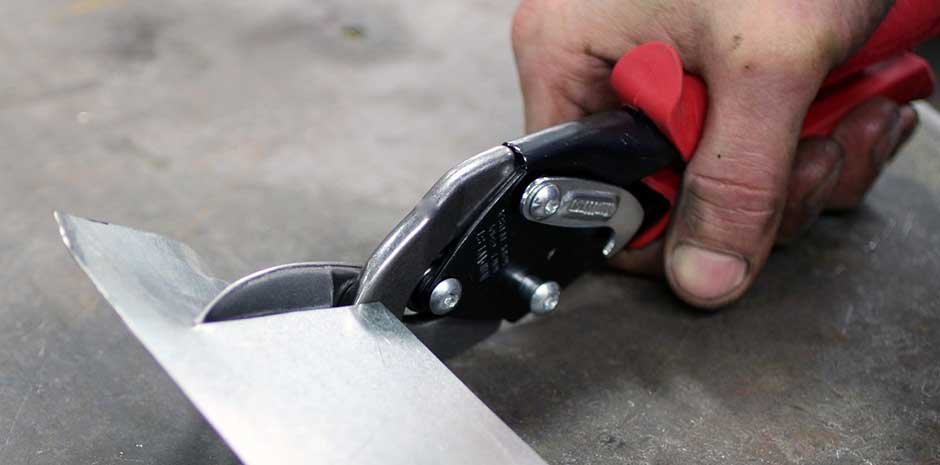Having the right tools for any job can make a huge difference in achieving your desired result. When it comes to sheet metal snips, however, you’re presented with an overwhelming number of choices. And if you’ve been around the DIY world long enough to have seen every type of snip out there, then chances are you already know that not all of them were designed for the same task. With so many shapes and sizes available, how will you know that these are the best snips for the project? Well, pouring over their various features can sound like a daunting ordeal at first, but when done correctly, selecting the perfect sheet metal snip will be one of the easiest parts of your entire sheet metal venture. So get ready to discover which kind of snip is just the tool for the job.
Bulldog Pattern Snips
Bulldog pattern snips are ideal for sheet metal shop work and can easily handle 18-gauge steel. These snips have longer handles than the conventional pattern, allowing you to generate more force when making cuts. The blades are also slightly curved, helping to ensure that they remain in contact with the material being cut as you make a cut.
Compound Action Snips
Compound action snips combine two cutting motions into one, meaning they require very little effort to use and generate more power than standard pattern snips. They’re popular among DIYers and professionals alike since they allow for the efficient cutting of tough materials like aluminum siding or gutters. The unique design of these snips means that two separate motions (straight up/down plus side-to-side) are applied to the material being cut, which helps ensure that even tough materials can be cut with ease.
Straight-Pattern Snips
Straight-pattern snips are designed for tight, straight cuts in light-gauge metals like aluminum flashing or vinyl siding. Because of their long handles and narrow blades, these snips tend to require less effort than other types of snips and generate a cleaner cut. These snips are also well suited for cutting through plastic sheeting or thin wire mesh.
Offset-pattern Snips
Offset-pattern snips are great for making small precision cuts in confined spaces since their unique design allows you to get close to the material being cut without having your hand in the way of the blade. They’re commonly used by HVAC technicians and roofers when cutting small openings in metal roofing material or installing ductwork. The offset-pattern snips also provide excellent leverage and allow for smooth, clean cuts with minimal effort.
Hawk’s Bill Snips
Hawk’s bill snips are designed for precise cutting and are ideal for intricate patterns and tight curves. The blades are slightly curved inward, allowing them to make sharp turns without the need for multiple cuts. Hawk’s bill snips can also handle 18-gauge steel and are perfect for any project where precision is key.
Aviation Snips
These are the most popular type of snips for home use since they’re lightweight and easy to use. They feature short handles and sharp blades that make it easy to cut through thin sheet metal materials like flashing and expanded metals or vinyl siding. These snips are great for trimming off excess material or making precise cuts around corners.
Left-Handed Pattern Snips
Left-handed pattern snips are just what they sound like; tools made especially for left-handed users. The blades are curved to the left, which helps users make precise cuts from left to right. Left-handed pattern snips can too handle up to 18-gauge steel, and the handles offer a comfortable grip for larger projects.
With so many different types of snips available, it’s no wonder that deciding which one is right for your specific project can seem overwhelming. However, armed with the knowledge of each snips applications, you are now in a much better position to make an informed decision about which type of snip may best suit your individual circumstance. Remember, each type of sheet metal snip has its own unique benefits and applications, so selecting the right one for your project is important. Consider the type of metal you will be working with, the size and shape of your project pieces, and the overall complexity of the job when making your selection. With the right snip in hand, you’ll be able to get your sheet metal projects done faster and easier than ever before.
Be sure to always use safety precautions such as eye protection, gloves, and stable footing when working with any type of sheet metal snip. It is also important to make sure that blades are sharp, so cuts are clean and precise. With the proper care and maintenance, a good pair of snips can last for many years. Have fun with your next sheet metal project.


